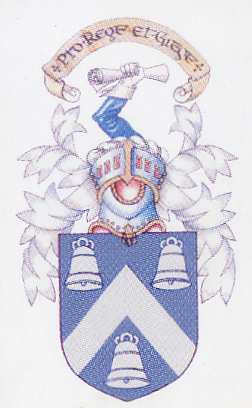
The Madras College Archive

|
|
The Madras College Archive |
 |
|
The Abbey Times remembered |

It was born on the 17th April 1964. The 4th year English class at the Burgh Secondary School had just sat their first "0" Grade English exams. There were still several weeks before the end of term and I decided to fulfil an ambition of mine. This was to create a weekly school newspaper written and run by pupils. It was to be quite different from the average school magazine. The newspaper envisaged would be factual and accurate, and would concentrate on reliable accounts of the events which affected pupils. What I had not realised was the amount of organisational work required. The paper, christened Abbey Times (the school buildings were in Abbey Street) after a competition for pupils, took hold very quickly and by the end of the session was selling about 300 copies each week in a school with a roll of some 400. From then on each new session brought frequent questions of "When is Abbey Times going to start this year?" Three cardinal rules were laid down from the beginning: nothing should be printed that had been written by any adult, including school staff, except in letters to the Editor; no named individual, staff or pupil, could be abused in the columns; and news stories must be as true as possible. These were underlined when an early editor wrote an editorial wrongly criticising staff and had to apologise in the paper for his inaccuracies, and items from the paper were published in local and national newspapers. During the next ten years Abbey Times grew until a world record could be set up, and then again broken, for the number of copies sold as a percentage of the population served. This stood at 97.2%. Readership surveys showed that each copy was read by more than 4 people, a readership of well over 3,500. Abbey Times brought two major advantages, one educational and one social. The pupils who wrote were experiencing writing for a definite purpose and seeing the result in print immediately, and often had the satisfaction of seeing their work quoted in local and national newspapers. It was also a team effort. About 100 pupils were involved in producing each issue. The jobs, regularly each week, were collecting news stories, writing the items (some 2,500 words each week), subediting, rough make-up, typing, duplicating (the handle was turned over half-a-million times in producing the 700,000 copies in 350 issues), checking, stapling and selling. Parents frequently said that it was the only source of information about what went on in the school. For ten years the price was one penny, but it still made a profit. There were no wage bills to be paid, the workers being usually willing volunteers. The profit was spent on equipment for the school, and on trophies. J D Wallace
|
|
| Weekly Duties: |
|
| MONDAY |
Editorial conference. Lucky number draw
Comment on last week's issue |
| TUESDAY |
Reporters find stories for Friday's issue, and
write items. |
| WEDNESDAY | |
| THURSDAY |
Afternoon - Items are sub-edited, headlined
and positioned on pages. Evening - Pages are typed & headlines stenciled. |
| FRIDAY |
Morning - The pages are printed and stapled
together. Each copy is numbered. Afternoon- The Abbey Times is sold. |